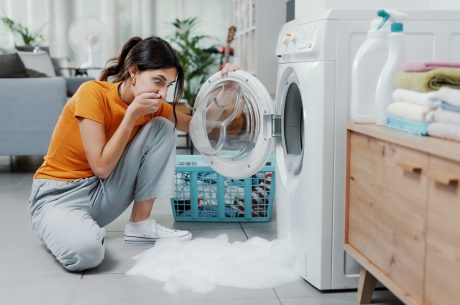Natural catastrophes can strike at any time and affect anyone. Although locations in flood zones are prone to flooding, a terrible storm might cause flooding where it wouldn’t normally occur. Flooding may cause significant damage to your home and its contents, including flood-damaged furniture.
If you have furniture that was damaged in a flood, don’t worry. There is hope for restoring it. Whether or not your wet furniture can be saved after a flood will depend on the type of furniture you have and the magnitude of flooding in your home. Solid wood furniture has a better chance of being salvaged than upholstered or particleboard furniture because they are less porous.
Water damage restoration is usually more detailed than a normal furniture restoration project and, therefore, better left to professionals. There are some steps you can choose to take without the assistance of a professional company. Here is some more information about flood-damaged furniture and what you should consider if you want to restore your furniture piece after a less impactful flood.

What Causes Water-Damaged Furniture?
The main reason furniture becomes water-damaged is due to the moisture it absorbs. This can come from a number of sources, including:
- Flooding
- Hurricanes
- Rain
- Seawater
- Leaky roofs or windows
How Does Water Damage Furniture?
When furniture absorbs water, it may create a number of issues. Wood, fabric, and leather goods respond differently to water damage. Here’s how:
Wood Furniture
Wooden furniture is affected by water damage in a few different ways. The most common problem is that the wood swells and warps. Swollen wood furniture is not just unsightly, but in many instances, it can make the furniture difficult to use or even cause it to break. The other issue with wooden furniture is that moisture content can cause the wood to rot. If the water damage is left untreated, the furniture can eventually fall apart.
Upholstered Furniture
Upholstered furniture is more likely to become water-damaged than wooden furniture because it absorbs more excessive moisture. The fabric on upholstered furniture can become moldy and mildewed if it’s exposed to water for too long. The foam inside the cushions can also become wet and start to smell bad.
Leather Furniture
Leather furniture is also susceptible to water damage. If the leather gets wet, it can start to rot and crack. In extreme cases, the leather can even fall apart.

What Should I Do About Water Damage?
It’s important to act quickly and inspect your home and its contents as fast as possible. The more time that passes after a flood, the bigger the damage will be. You should reach out to a water damage remediation and restoration company immediately. PuroClean has the tools and knowledge to help you mitigate water damage and restore salvageable items.
Take photos of flood-damaged furniture; they will help you when filing an insurance claim. When deciding which items to salvage, take into account the severity of the damage, sentimental value, and the cost of restoration. A water damage restoration company can help you work through this process.
If possible, move salvageable furniture to a dry area to begin the drying process. If a piece of furniture is too heavy to move, consider placing wood blocks or aluminum foil under the legs to protect it from the wet floor.
How Can I Restore My Flood-Damaged Furniture?
There are a few different ways to repair furniture that has been water-damaged. The best way to determine the appropriate method to restore your furniture depends on the type of furniture and the type of damage it has sustained.
If The Furniture Is Wet
Wood furniture must be air-dried with the help of fans in a shaded and well-ventilated area. Furniture should not be exposed to direct sunlight, as it may cause wood to crack or distort. It’s also important to dry wood furniture slowly to avoid warping. This is because saturated wood expands when wet but shrinks when dry; if the process happens too quickly, warping will occur. Solid wood furniture is more resistant to water damage and can usually be salvaged.
First, the entire furniture surface must be clear of any dirt or mildew. Then, the piece should be dried completely and re-glued where necessary. Don’t attempt to use force to open or close swollen doors or drawers. To help solve the problem, air should be allowed to circulate until the wood dries fully.
Upholstered furniture that has been soaked in floodwater is usually not worth saving, as contaminants are very hard to remove. If you choose to restore heavily soaked upholstered furniture, professional restoration services are required.
Upholstered furniture can sometimes be salvaged if it just comes in contact with a small amount of clean water during the flooding. In this case, separate upholstery fabrics and other colored items to prevent color bleeding, then completely dry the furniture to prevent mold or mildew.

If The Furniture Is Dry
If the furniture is dry but has signs of water damage, you may be able to fix it by using wood glue or a wood filler. If there are any cracks in the wood, you can fill them in with a putty knife. Once the glue or filler has dried, sand it down until it is smooth.
If the furniture is dry but still in good condition, you may not need to do anything to restore it. Just give it a good, thorough cleaning, and it may be ready to use.
How to Prevent Flood-Damaged Furniture
Preventing flood damage to furniture requires proactive measures before, during, and after a flood event. Here’s how to prevent flood damage to furniture:
- Elevate Furniture: Before a flood occurs, elevate furniture off the ground by placing it on blocks or pallets. This helps minimize direct contact with floodwater and reduces the risk of water damage.
- Secure Items: Anchor large furniture pieces to the wall or floor to prevent them from shifting or floating during a flood. Use straps, brackets, or anchors to secure heavy items like bookcases, cabinets, and appliances.
- Use Waterproof Coverings: Invest in waterproof covers or tarps to protect furniture from water damage. Cover upholstered furniture, mattresses, and other porous items to create a barrier against moisture.
- Store Valuables Safely: Store valuable or irreplaceable items in waterproof containers or on upper floors of your home to keep them safe from floodwaters. Consider relocating sentimental items to a safer location before a flood occurs.
- Document Inventory: Keep a detailed inventory of furniture and belongings, including photographs and receipts, for insurance purposes. This documentation will be invaluable when filing claims for flood damage.
- Inspect and Clean Furniture After a Flood: After the floodwaters recede, carefully inspect furniture for water damage, mold, and mildew. Discard any items that are extensively damaged or contaminated beyond repair. Clean and disinfect salvageable furniture using appropriate cleaning agents and techniques. Thoroughly dry furniture outdoors or in a well-ventilated area to prevent mold growth. Seek professional help.
Call PuroClean Today for Help with Water Damage Remediation and Restoration!
Restoring flood-damaged furniture can seem like a daunting task, but with a little bit of knowledge and effort, it is possible to bring your furniture back to life. By following the tips in this blog, you can get your furniture looking and smelling like new again. Water damage can happen at any time for any number of reasons, from natural disasters to leaky or burst pipes.
It’s vital to reach out to a professional to mitigate the damage and begin the restoration process as soon as possible. Our professional technicians are available 24/7 to help! To learn more about the water damage services available, visit our website or call (800) 775-7876 to connect with your local PuroClean office today!




